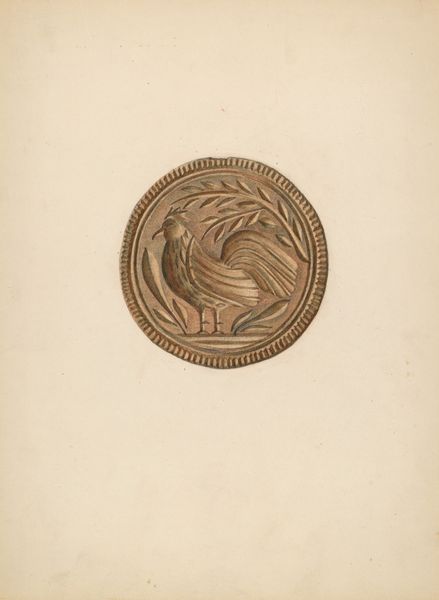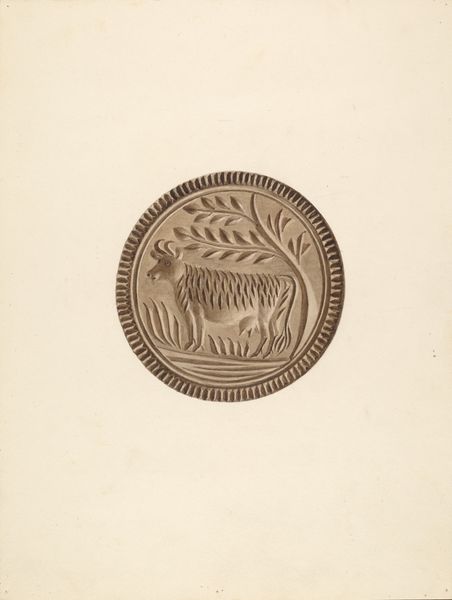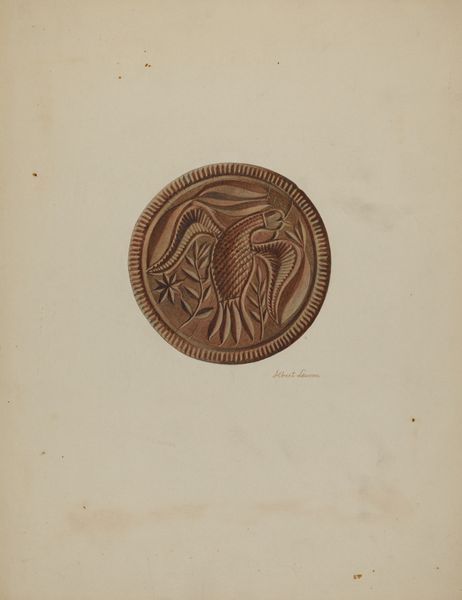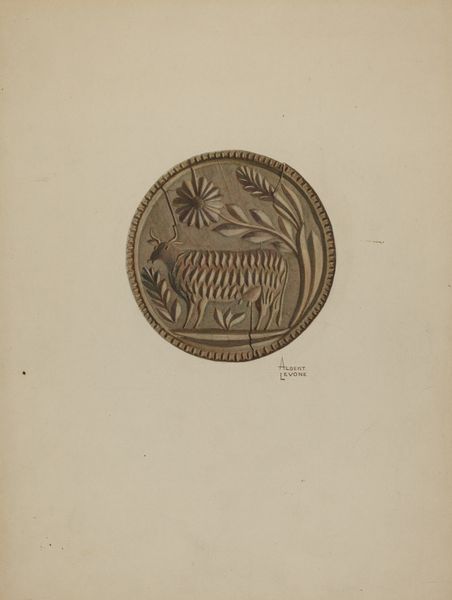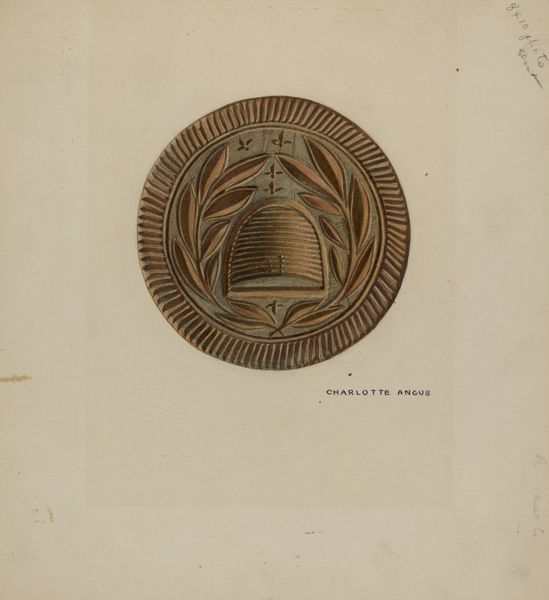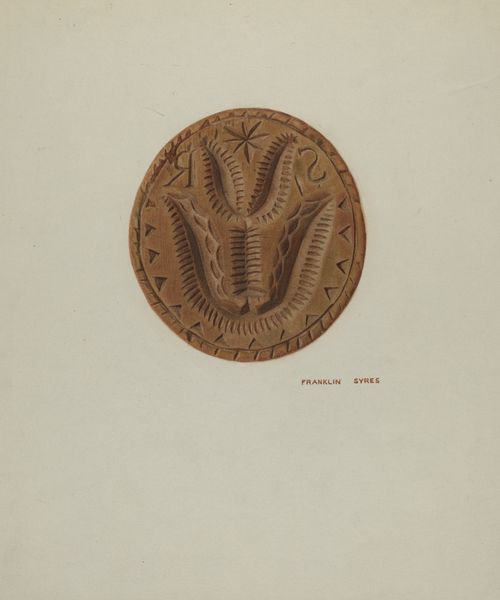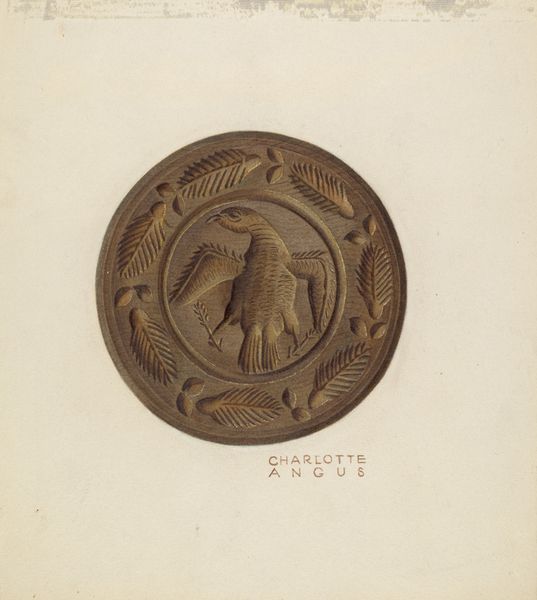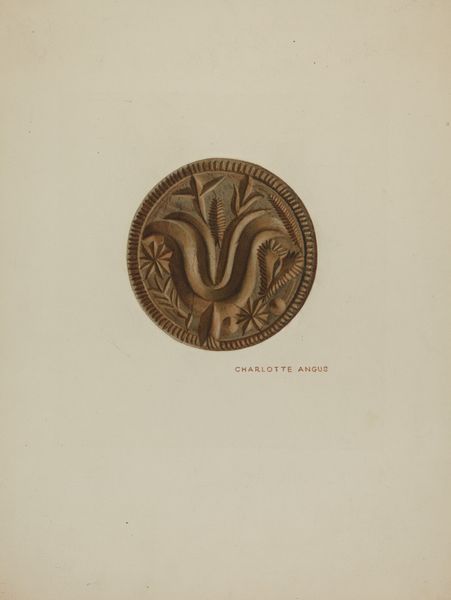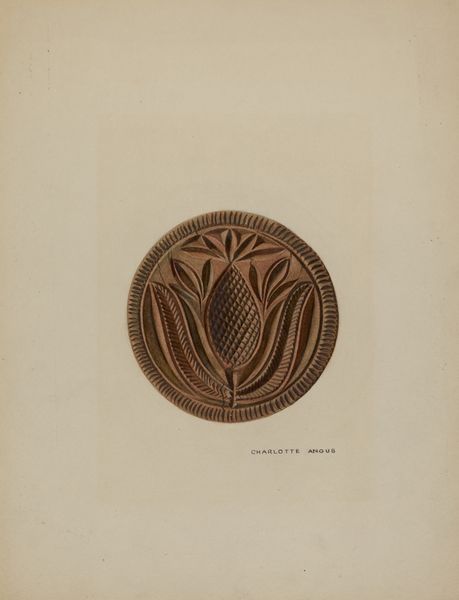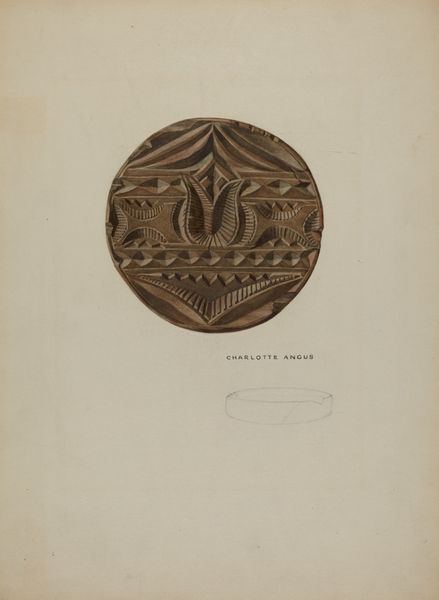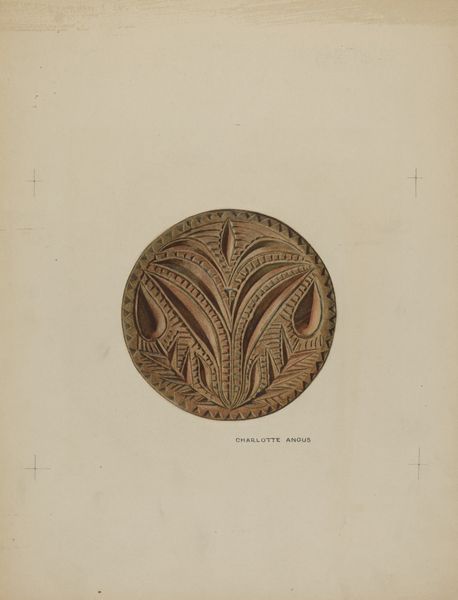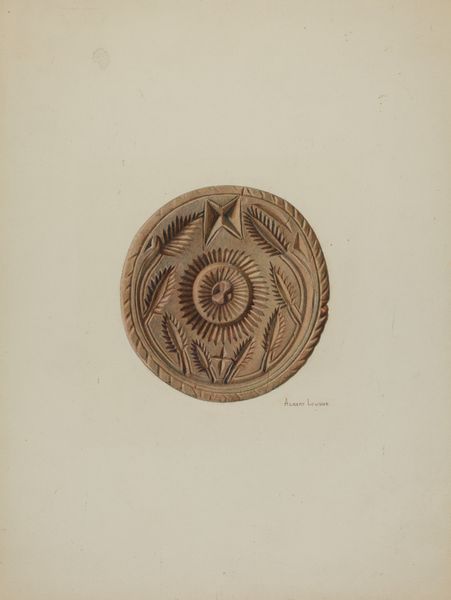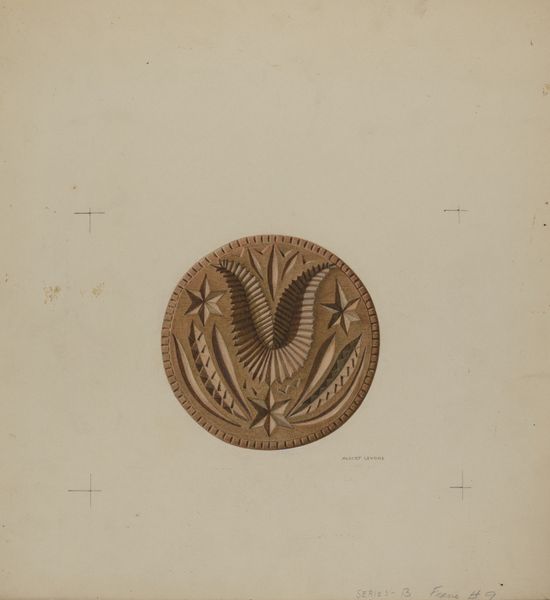
drawing, carving, wood
#
drawing
#
carving
#
folk-art
#
wood
#
watercolour illustration
#
watercolor
Dimensions: overall: 32.4 x 24.5 cm (12 3/4 x 9 5/8 in.)
Copyright: National Gallery of Art: CC0 1.0
Curator: Albert Levone crafted this "Pa. German Butter Mold" around 1938. It’s an interesting intersection of carving and drawing that presents a watercolor illustration of folk art, primarily using wood as the base. Editor: Immediately, I feel a sense of rustic charm and a little bit of folk magic. It's got this earthiness from the tones that makes you want to cozy up in a cabin and churn your own butter! Curator: I find it significant that this butter mold hails from the Pennsylvania German tradition, a culture where artistic expression was deeply interwoven with everyday life. Food preparation wasn't merely a task; it was a canvas for cultural identity. Editor: Oh, I absolutely get that! It's not just about the butter, right? It's about imprinting tradition onto something so simple, making every meal a mini-celebration of heritage. What do you make of the central image, that proud-looking bird intertwined with foliage? Curator: Birds are fairly common, although the style and plants might indicate specific symbolic meanings. Pennsylvania German folk art often contains motifs of nature, serving as talismans that reinforce a harmonious relationship between humans and the land, along with their unique identity. These weren't randomly chosen details; they spoke to very precise beliefs and values. Editor: Absolutely. And there’s a rhythmic quality to how the artist plays with light and shadow through line and curve. It looks like this piece started out as an attempt at representing a commonplace domestic item, but it evolved into a symbolic carrier of heritage. Don't you feel the depth of identity practically jumps out? Curator: Yes, there is an intriguing convergence between functionality and aesthetic. In viewing a seemingly quotidian object, such as a butter mold, through a lens of cultural legacy, the technique moves away from just domestic applications. These carvings transformed simple, utilitarian actions into rituals, enriching the identity of those practicing them. Editor: So beautifully put! I love that—these folks took butter, and they took pride in what was culturally their own! You know, looking at this piece has been a reminder for me about the ways we can create our own rituals—inject beauty into the ordinary and carve our own stories into existence. Curator: Agreed. Thinking about art within an intersectional discourse has changed the way I approach art; what once might have appeared to be just decorative folk art contains incredible cultural and personal histories to tell.
Comments
No comments
Be the first to comment and join the conversation on the ultimate creative platform.
